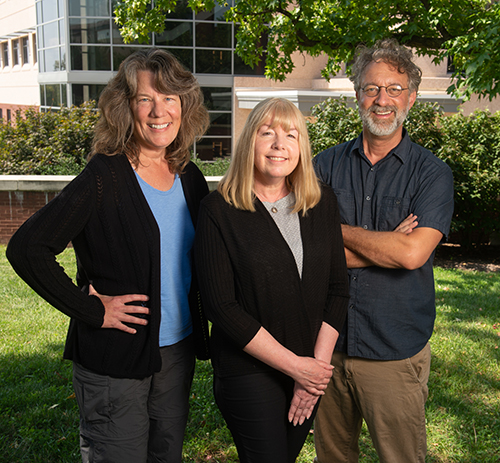
Racial and ethnic minorities are underrepresented in the field of environmental health sciences, despite the need for diverse perspectives to ensure human health and well-being throughout all communities. To help address this disparity, the National Institute of General Medical Sciences of the NIH has awarded Southern Illinois University Edwardsville a five-year, $1,337,855 grant from its Science Education Partnerships Award (SEPA) program.
Through the project, “Environmental Health Investigators: Building STEM Interest to Promote Careers in the Health Sciences,” a team of SIUE faculty researchers, curriculum developers and graduate students will develop a community-based environmental health program and provide minority students opportunities to learn about and prepare for a career in health sciences.
The project is co-led by principal investigators Sharon Locke, PhD, director of the SIUE STEM Center and associate professor in the Department of Environmental Sciences, Georgia Bracey, PhD, research assistant professor in the STEM Center, and Ben Greenfield, PhD, assistant professor in the Department of Environmental Sciences. Senior Personnel include Jennifer Zuercher, PhD, assistant professor in the Department of Applied Health, and Carol Colaninno, PhD, research assistant professor in the STEM Center.
“This project builds on our existing relationship with Madison County schools by providing opportunities for youth to design and conduct authentic scientific investigations to help their community,” said Locke. “We are both grateful and excited to receive NIH SEPA funding, which is allowing us to teach youth about how environmental conditions impact human health. Local students will help measure air quality, soil quality and noise levels in the region to determine trouble spots and develop solutions to improve environmental conditions.”
By creating a community-based science education curriculum, the team hopes to generate and sustain an interest in health sciences that will ultimately alter students’ education and career pathways.
“We anticipate that middle school students will develop an interest in health sciences if they participate in authentic activities in a real-world context, engage with and understand relevant scientific content that connects with their community, and interact regularly with professional scientists,” Bracey explained.
The project also provides four graduate assistantships each year for SIUE students to help collect environmental health data and teach the youth how to collect and analyze scientific data. According to Greenfield, “The graduate students, who will be role models and mentors, are an integral part of our team, helping to design lessons and deliver instruction in an after-school setting.”
Some of the graduate students will use the air, soil and noise data as part of their master’s research. Others are studying the program’s impact on student interest in environmental health and science careers, and participating students’ intentions to take advanced science and math courses in the future.
The team is developing a one-year curriculum that includes hands-on investigations that require teamwork and communication. In fall 2019, students used a technique developed for the project called “Environmental Photovoice” to document environmental factors that affect human health. Students took photographs of features in their community that might contribute to pollution and created written narratives describing their significance. The students then presented their photos in a community showcase in December.
“The first semester of the project was a big success,” said Zuercher. “We had to make adjustments when the COVID-19 pandemic required a temporary suspension of the in-person program. The team has been extremely resourceful in developing new ways to reach students. We are preparing educational kits about soil quality to deliver to students, so that they can continue to learn environmental health at home.”
The project includes annual professional development workshops for teachers who would like to implement the curriculum. The training focuses on teaching environmental health in a science classroom, the Environmental Photovoice method, and using air sensor technology. Teachers who commit to using community-based data with their students will receive air monitoring equipment for their classroom.
Educators are invited to register for the online workshops being held via Zoom from 9 a.m.-Noon Tuesday, June 9 and Thursday, June 11. Registration is available at SIUESTEMCenter.org/2020/06/02/enheinpd/.
By the end of the project, the team hopes to have prepared a successful environmental health curriculum and program model that can be easily replicated in other communities. Along with increasing minority student interest in the health sciences, the results of this research have the potential to identify environmental concerns of residents in economically stressed communities and to improve upon them in the future.
Photo: (L-R) SIUE’s Environmental Health Investigators research team includes co-principal investigators Georgia Bracey, PhD, Sharon Locke, PhD, and Ben Greenfield. (photo taken fall 2019)
















